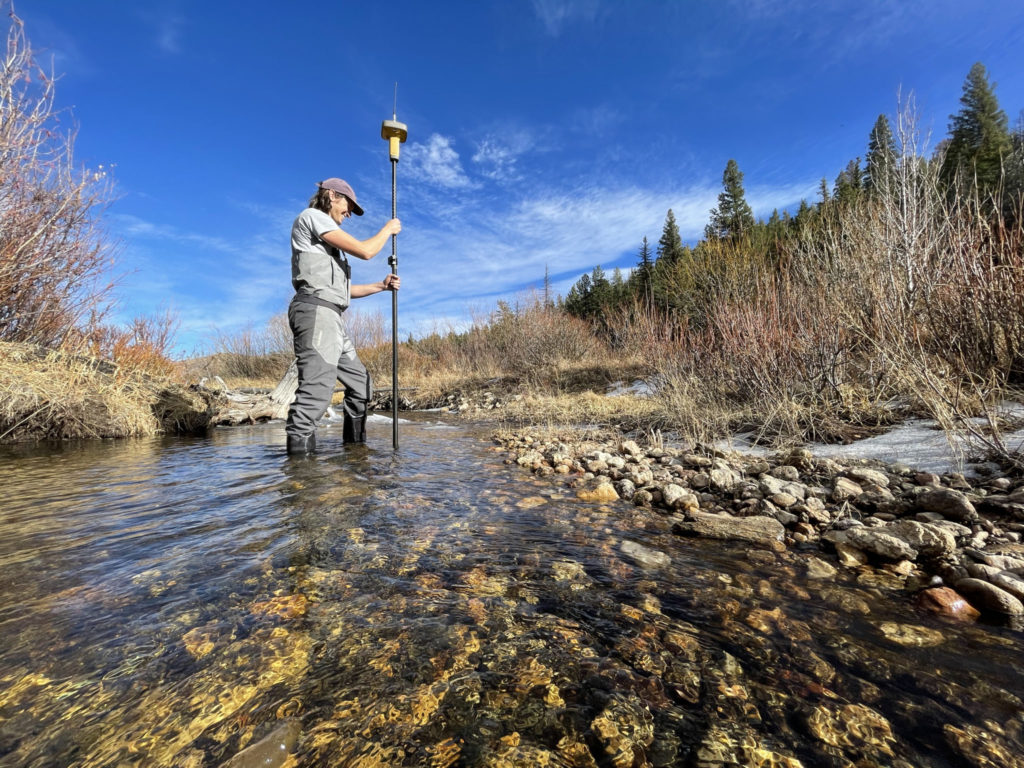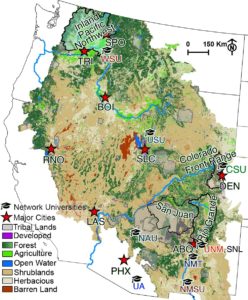An interdisciplinary group of Colorado State University researchers is part of a $15 million National Science Foundation research network created to enhance sustainability, equity and resilience in the Intermountain West.

Ryan Morrison, assistant professor in the Department of Civil and Environmental Engineering, will lead CSU’s involvement in the five-year project, which will focus on three regions impacted by catastrophic wildfires, declining water supplies and rapid urban population growth – the Colorado Front Range, upper Rio Grande and San Juan River watersheds, and inland Pacific Northwest. Drawing on diverse academic disciplines and non-academic partnerships, the network aims to better connect urban and rural systems for a more sustainable future.
The network, encompassing scientists and stakeholders from eight universities and more than 50 partner organizations, will study regional systems and design solutions to help the regions better address increasing pressures. They will seek input from local stakeholders, including Indigenous populations, governments and nonprofit organizations, to propose management options that will benefit both people and the environment.
“This project is focused on working collaboratively with community partners to develop place-based solutions that make their headwater systems, food-energy-water systems and governance systems more resilient,” Morrison said. “We’re hoping that many of the insights we learn will be transferrable across the entire Intermountain West, where there is a growing dependency between urban and rural systems.”
Through his research, Morrison strives to sustainably integrate ecological and human needs into water resource management. For this project, he will work to understand how river and floodplain systems can be managed in a more resilient manner as social-ecological systems.
One of four co-principal investigators, Morrison will lead interdisciplinary teams across several colleges at CSU. His CSU colleagues on this project include Aditi Bhaskar, assistant professor of Civil and Environmental Engineering; Dale Manning, associate professor of Agricultural and Resource Economics; Camille Stevens-Rumann, assistant professor of Forest and Rangeland Stewardship; and Kelly Jones, associate professor of Human Dimensions of Natural Resources. The One Water Solutions Institute, based in the Department of Civil and Environmental Engineering, will develop web tools for the project.

“This research will be important for drawing together diverse institutions and partners across the Intermountain West,” Morrison said. “One institution cannot adequately study the challenges facing the region, but, as a group, we hope the research network will provide the capacity to tackle some of these large-scale challenges.”
Transforming Rural-Urban Systems: Trajectories for Sustainability in the Intermountain West Research Network is led by the University of New Mexico in partnership with CSU, the University of Arizona and Washington State University. It accounts for half of a $30 million investment by the NSF Sustainable Regional Systems program and was co-funded by the Established Program to Stimulate Competitive Research and the NSF INCLUDES, or Inclusion across the Nation of Communities of Learners of Underrepresented Discoverers in Engineering and Science, program.
Additional funding from the Hispanic-Serving Institutions program will support research opportunities for undergraduate and graduate students as well as STEM activities for K-12 students.